1921 – 1938: The early years (in the Dominican Republic)
Antonio is born in Barahona, Dominican Republic in 1921, from Haitian immigrants. He is only 3 years old when his father dies. His wife, with no profession or work experience but with plenty of courage, is left to fend for herself and her three children: Andre, Antonio and Altagrace. At the early age of 12, Antonio is working part-time to help his mother. At times as a courier, at times as a tailor’s assistant. At the age of 14, unbeknownst to her, he registers in a public school. He recounts that, from the beginning of his student life, his teachers recognize his artistic inclinations and one of them gives him a box of watercolor and some paintbrushes. He starts using them immediately. During his free time, he studies tailoring and music.
The events of 1937 (massacre of the Haitians by the Dominican soldiers on order of the dictator, Rafael Leonidas Trujillo) cause the family to escape to Haiti.
1938 – 1944: The early years (in Haiti)
Antonio works as an apprentice tailor in various shops in Bel-Air, Port-au-Prince, where the family finally settles. He spends some of his time illustrating Spanish poems, using house paints and cardboard boxes. One day, he learns from one of his friends, the engineer, Martial Seide, that an art center is about to open in Port-au-Prince under the initiative of an American artist, Dewitt Peters. Immediately interested, Antonio is the first to enroll in the “Centre d’Art Haitien.” It was May 14, 1944.
1944 – 1957: The formative years
Antonio is 23 when he starts his art studies as the first generation of modern Haitian artists, getting acquainted with aquarelle and geometric design notions. He takes full advantage of the foreign artists visiting the Centre d’Art, sometimes as simple tourists, sometimes as temporary professors. With Carlos Enriquez from Cuba, he learns techniques of fresco and interior decoration. With Jason Seley from the USA he learns modeling and sculpture and William Calfee also from the USA, wall preparation and mural art. Paul Keen, yet another American artist, helps him transition from watercolor to casein and then to oil painting. In 1949 with Pierre Bourdelle (son of the famous French sculptor: Antoine Bourdelle) who came to Haiti to supervise the creation of the murals at the par to celebrate the Bicentenary of Port-au-Prince, he is introduced to composition and transposition of art on large canvas.
1945: First joint exhibition with George Remponeau at the Centre d’Art
1949: First solo exhibition at the Centre d’Art
1951: He meets Ermite Damour, a young Bel-Air resident. Their relation, though, of short duration, results in his first born son: Yves.
1951: Group exhibition at the National Palace of Guatemala under the title: “50 Haitian Paintings.”
1951: He wins first place in the national competition: “L’haïtien au travail” organized by the Labor Department in Haiti with his painting: « Maçon au travail. »
1952: Exhibition at La Havana, Cuba.
1953: On March 10th 1953, he marries Solange Jacques, a young woman living across the street from his Bel-Air house, at St. Joseph Church in Port-au-Prince. A simple celebration at the Centre d’Art followed the religious ceremony. A few months later, his first daughter, Florence, is born. Two other daughters: Myriam and Ludny and two sons, Antonio Jr. and Jean-Emmanuel will follow.

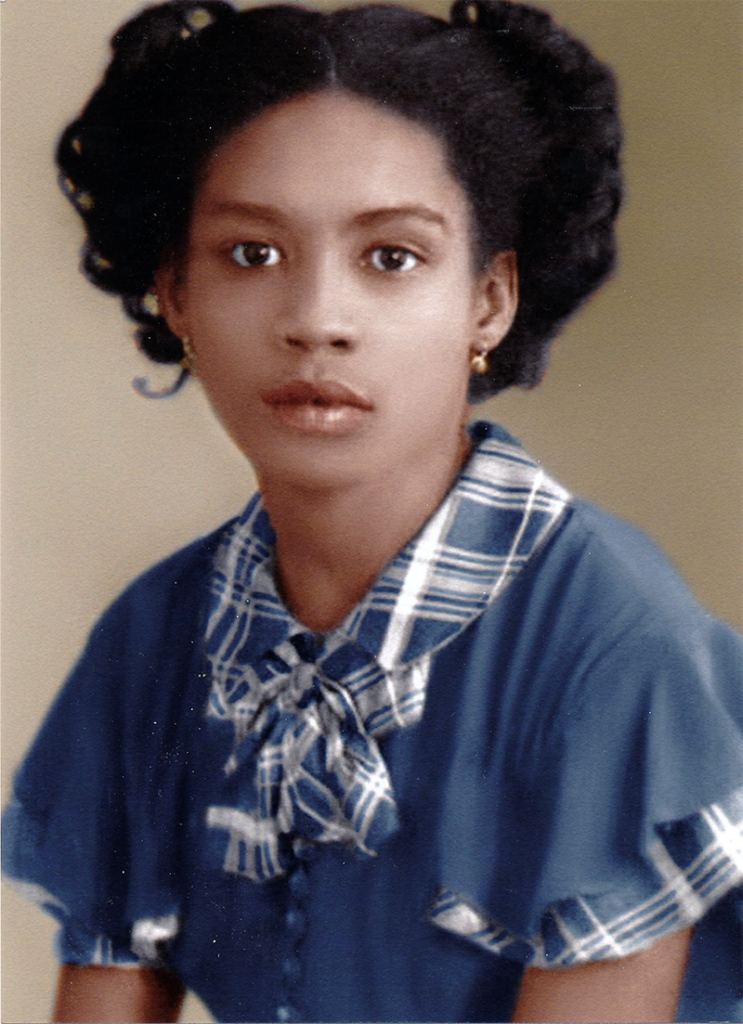
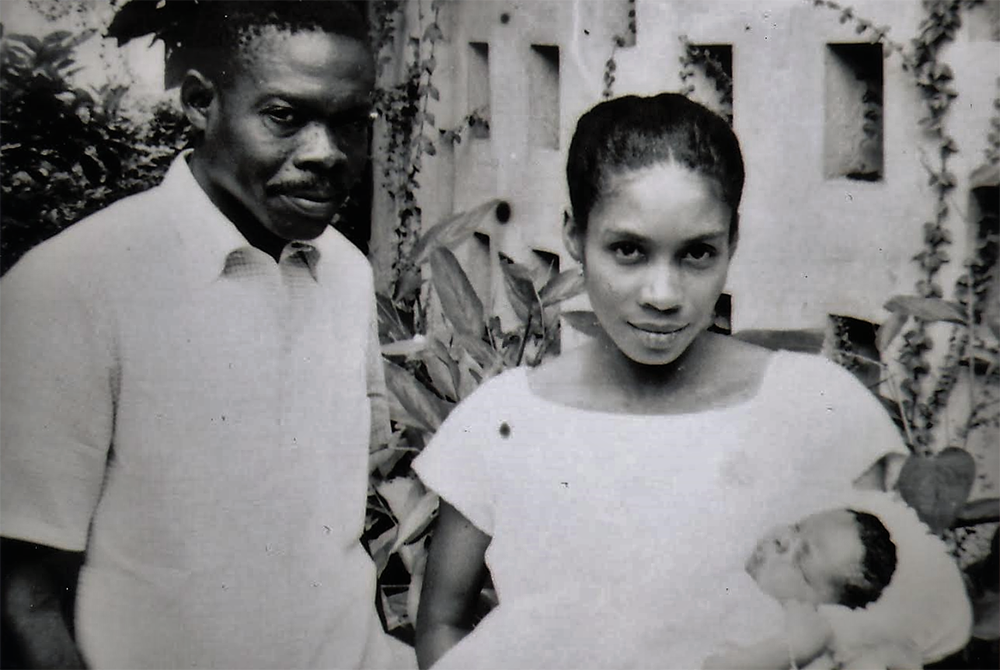
1953: Joint exhibition with the American artist, Paul Keen.

1953: Joint exhibition with the American artist, Paul Keen.
1953: First Guggenheim fellowship with his subsequent first trip to the United States where he remains for one year as stipulated by his scholarship. He visits many museums and artistic institutions and gets acquainted with other artists. He also travels to Mexico, where he spends some time.
1953: Collective exhibition at the Dusseldorf Art Museum in Germany: “Modern and Contemporary Haitian Paintings”
1954: Exhibition at the Art Museum of the Americas in Montevideo, Uruguay: “Impression of the United States”
1955: Fifth exhibition at the Centre d’Art
1956: Sixth exhibition at the Centre d’Art
1957: Second Guggenheim fellowship and second trip to the United States.

(From right to left: Francine Murat; Antonio, Roland Mideau (brother in law of the artist) Solange (his wife) Ms. Leblanc; the two Misses Charles; Louis Dubois.)
1959: Seventh exhibition at the Centre d’Art.
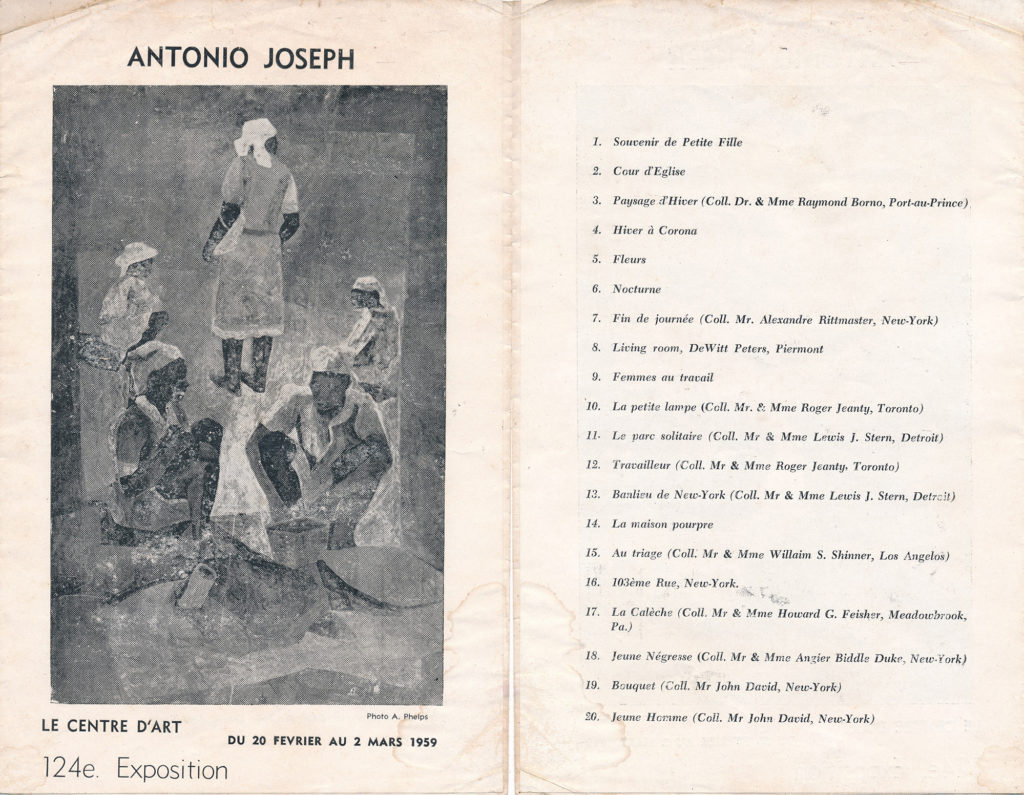
1960: Return to the United States for a brief visit, accompanied by Dewitt Peters, followed by visits to France, Spain, Italy, Greece, Morocco, Germany and Switzerland.
1966: Participation in the first global festival of Negro Art: Dakar, Senegal.
1969: He is arrested by the dictator Francois Duvalier’s secret police, at the Port-au-Prince international airport, while on his way to the United States where he is to participate in the Air France building inaugural art exhibition. He spends three long days in a cell at the police headquarters with a few other prisoners. He is then released in the middle of the night after being interrogated extensively.
1969: Solo exhibition at the Air France building Art Hall in New York City.
1969: He studies the technique of silkscreen printing (serigraphy) in the United States with Frank Jacobson.

1970: Exhibition at the Bradley Gallery in Milwaukee, Wisconsin.
1970: Exhibition at the Davenport Municipal Gallery, Davenport, Florida.
1971: Participation in the exhibition: “Arte Actual Ibero-Americano” at the Cultural Institute in Madrid, Spain.
1975: Collective exhibition at the Mexican Museum of Modern Art
1976: Teaches Art and Silkscreen printing at the Haitian Art Museum and at the Centre d’Art.
1978: Collective exhibition at the Brooklyn Museum.
1997: Exhibition retrospective at the Museum of the Americas in Washington DC, USA.
1997: Exhibition retrospective at the Haitian Museum of Art in Port-au-Prince, Haiti.
2001: ” Images From Indies”
Collective exhibition at the O & Y gallery in Coral Gable, Florida. With the Cuban Artist Nelson Franco.
November 2014: Return to the past. A trip much anticipated. 70 years after his escape from the Dominican Republic, he returns to Barahona with his older daughter, Florence. Everything is changed of course, but he recognizes the familiar aromas of his childhood.
May 7, 2016: It is on a rainy day that the artist passes away at his residence in Carrefour at the age of 95, from chronic cardiac failure, in front of an unfinished painting, surrounded by his brushes and easel. He leaves behind a personal collection encompassing his various artistic periods, including: aquarelles, casein on hardboard, oil and acrylic on canvas, serigraphs, ink, charcoal and pencil drawings. An important body of work essential to the creation of this museum dedicated to him.
“Art is the language used by the artiste to express his innermost feelings. Through his work he tells his happiness, his, sometimes futile, desire to reach a perfect nitescence or his revolt in front of human ugliness and cruelty. Art is also used by the artist to reveal the immense beauty which surrounds us and which too frequently we ignore…”
Antonio Joseph: Mémoires
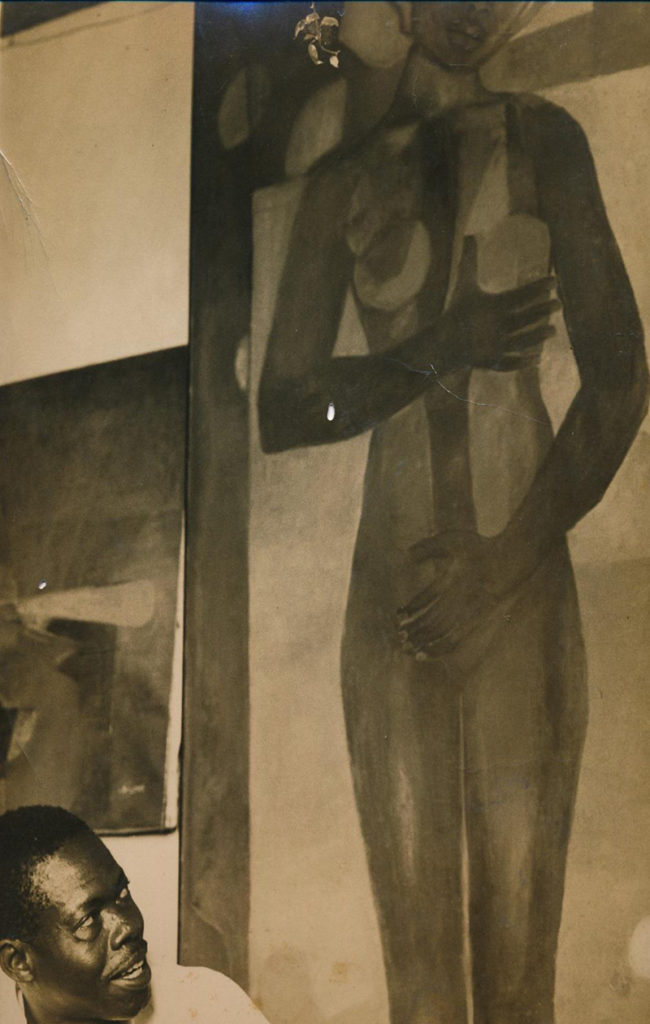
Antonio Joseph the artist, just like his work, was of sensitive nature. Private and reclusive, he had very few friends and socialized very rarely. Among the few friends who were important in his life were: Guy Fouyolle, the godfather to his second daughter, Myriam; Dewitt Peters, founder of the Centre d’Art and his first art teacher; John Colt, a contemporary American artiste, art professor at Wisconsin university in Milwaukee who fell in love with Haiti after his first visit there. He, eventually, lived part time in Haiti and he and Antonio became very close friends. There was also Pierre Monosiet, the godfather to his first daughter, director of the Centre d’Art when Peters passed away and subsequently curator of the Museum of Haitian Art in Port-au-Prince. And, Albert Mangones, godfather to his second son, Antonio Jr., architect, creator of the famous sculpture: “Le Marron Inconnu.”

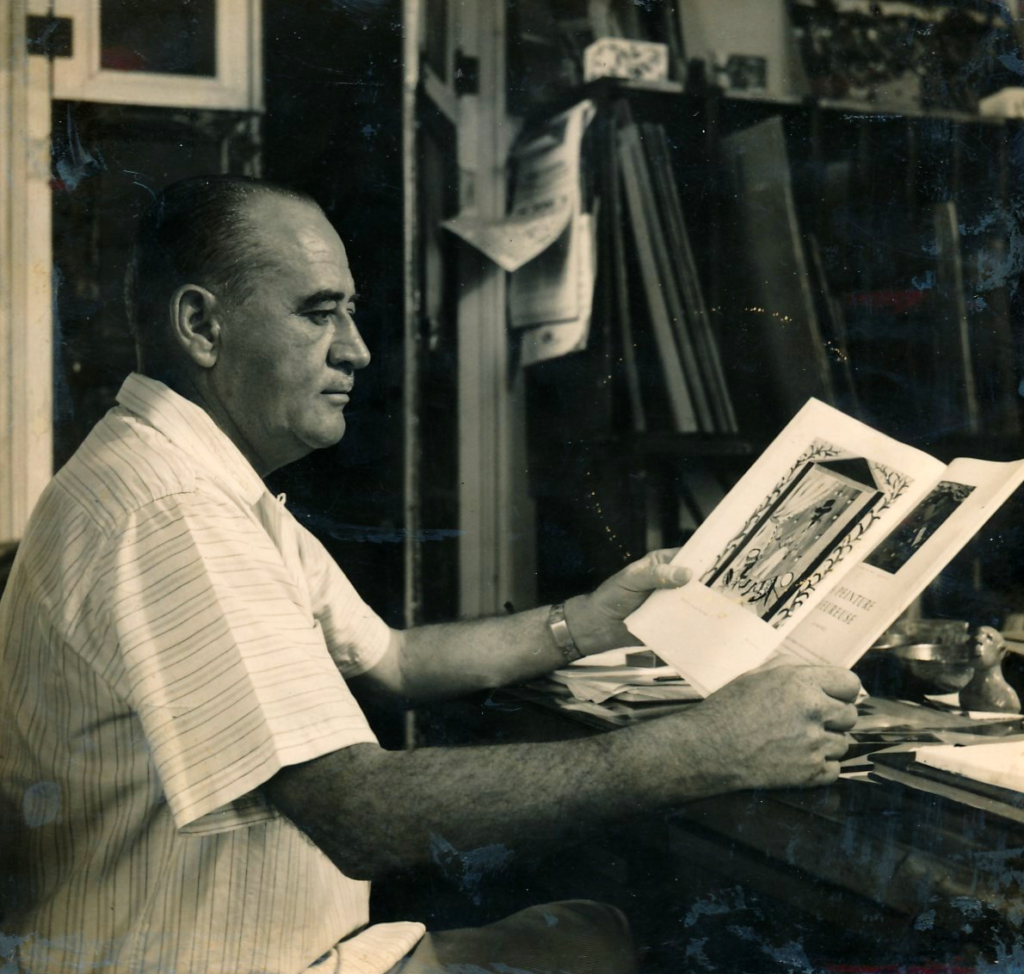
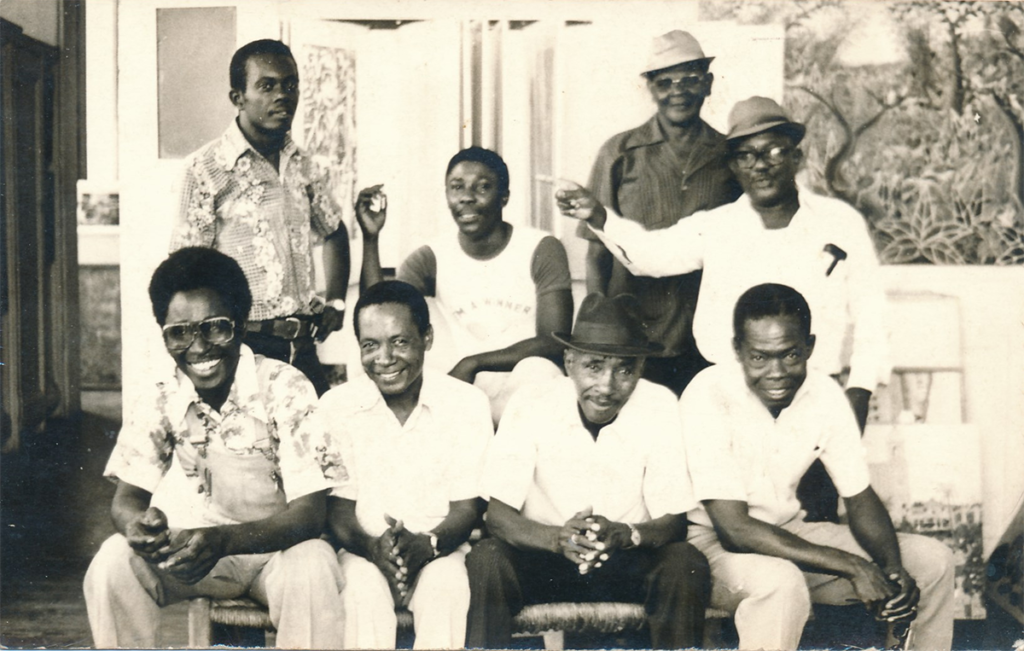
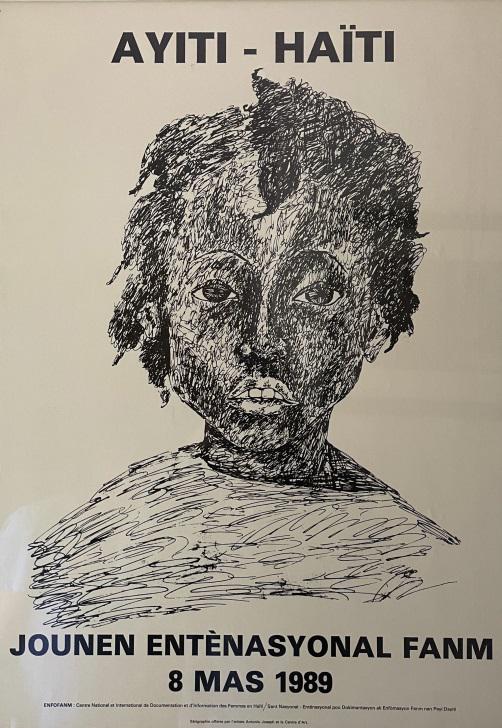
Antonio Joseph : Mémoires

